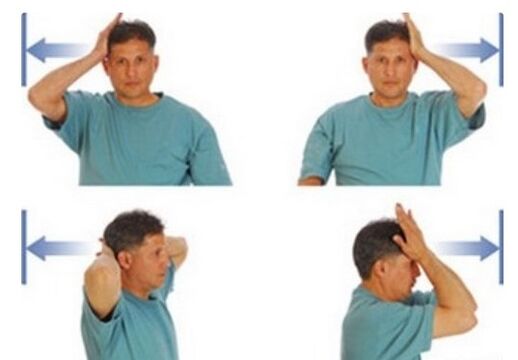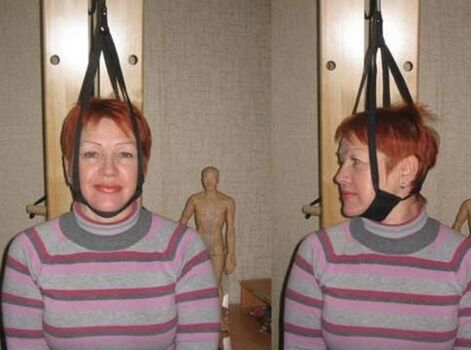Osteochondrosis in the cervical area is a dangerous condition and if left untreated you may become a disabled person. In the face of this disease, many people consider how to deal with it. Let's find out the complexity of the disease.

Osteocartilage degeneration in the cervical spine is a disease with its own symptoms, stages, causes and treatment.
The nature of disease
Osteocartilage of the cervical vertebra is a progressive disease characterized by degeneration of the disc between the vertebrae and changes in malnutrition.
The cervix is represented by seven vertebrae and is the most moving, but the muscle corset is dysplasia. He is responsible for the head to the side and the slopes of its turn.
Disease stage
The development of the disease is divided into four stages, and the degree distinguishes:
- 1 degree.This stage is characterized by instability manifestation in the initial destruction of the disk.
- 2 degrees.At this stage, the herniation of the intervertebral disc is manifested. The distance between the vertebrae is reduced, the damage of the annulus begins, and pain occurs due to the clamping of the nerves.
- 3 degrees.The ring was finally destroyed and the hernia formed between the vertebrae. The spine is very deformed.
- 4 degrees.She is the hardest. Every exercise can cause severe pain. As bone tissue increases strongly, the disease leads to disability.
This figure illustrates the development stage of osteochondrosis in the cervical spinal canal
Important! At each stage - use different symptoms and different treatments. Regardless of the stage of the disease, doctors have taken steps because this allows you to improve the quality of life for your patients.
Causes of the disease
To date, an increase in the age of 18 to 30 has been noted. Previously, the disease was only found in older people and occasionally in people under the age of 40. The causes of cervical osteochondrosis are different.
Among the main standouts:
- Too much weight;
- Change posture;
- scoliosis of the neck;
- Injury to the cervical spinal canal;
- Failures in the metabolic process;
- Continuous weightlifting;
- Poor physical training;
- pressure;
- A sedentary image of life;
- The existence of infectious diseases;
- Often hypothermia.
If you experience routine back pain, you can send a signal to your spine. One of these diseases may be instability in the cervical spine. What are the causes and main symptoms of this disease? What complications may occur if you don’t start timely treatment?
Osteocartilage degeneration in the cervical vertebra is closely related to muscle spasms that limit vertebrae mobility. As a result, the blood circulation and posture process is violated. All of these factors trigger malnutrition in the disk between the vertebrae. As a result, the nerves were clamped.
Incorrect location during sleep can lead to osteocartilage degeneration in the cervical spinal canal
The manifestation of the disease
Most commonly, signs of manifestations of cervical bone cartilage bones are associated with failure of brain blood circulation.
Typical are:
- Dizzy loss of consciousness is possible;
- Frequent headaches;
- Slim in athletic coordination. In most cases, the disease manifests itself in gait disorders.
- Often there are sounds in the ears, as well as hearing impairment;
- The look of snoring;
- Reduce vision;
- hoarse appearance, hoarse sound;
- Loss of sensitivity of fingers.

Important! When several symptoms are shown, consult your doctor for advice. Don't intervene yourself.
Symptoms of cervical osteochondrosis
Osteochondrosis in the cervical vertebrae region is manifested by the following symptoms:
- Koreshka. The patient feels pain to the blade or shoulder strap. He also felt his fingers, brushes, and forearms tingling. These symptoms are directly related to nerve clamping.
Neck bone and cartilage disease in the spinal canal, pain is given to the shoulder
- Back compression;
- vertebral artery;
- Disease reflex. They are expressed in acute and severe pain in the neck and occipital area, and they manifest when sneezing, sleeping, or sharp head turn right or left or when sharp head turn.
- Cardinal syndrome. This symptom is similar to angina pectoris. The pain is paroxysmal and prolongs for a long time. If a cough occurs, it will increase, and a person sneezes and his head will turn sharply.
Important! If inflammation of cervical osteochondrosis occurs, the symptoms are expressed in a brighter form.
treat
Treating osteochondrosis in the cervical spine, but it takes a lot of time. In addition, it should be done in full swing in the hospital.
Doctors have taken a series of measures and funds in their fight against the disease. Among them:
- Hivamat is a procedure for performing electrostatic vibration massage on special equipment. It is anesthetized, has anti-inflammatory effects, allowing you to remove edema and muscle tone. According to statistics, two classes to relieve pain syndrome are sufficient.
- Laser therapy for MLS. The process is designed to relieve pain, clear inflammation, and regeneration of soft tissue. This approach is innovative but successfully used to treat osteochondrosis in the cervical spine and other spinal canals.
- Electrophoresis. This is a procedure in which a pulse of current is used to introduce drugs under the skin. It has analgesic and anti-inflammatory effects.
- Ozokerite application. Treat with rock wax and paraffin. After applying composition, the sore spots are covered with film. It does not cause unpleasant feelings and has a positive impact.
Exercise of cervical osteochondrosis. Simplicity and effectiveness. A systematic approach is needed every day
Important! All procedures are prescribed by a physician, depending on the patient's disease and individual characteristics. They are always selected individually.
The cervical spine of the human body is an important part, and problems at work are caused by negative consequences. In addition, neglected diseases associated with the neck gradually affect the chest area. Practicing the cervical column will help maintain health and restore mobility in the bone and muscle system areas.
In addition, the program is supplemented:
- analgesics, anti-impurities and anti-inflammatory drugs;
- Use gel, cream, ointment for tissue recovery;
- Healing physical exercise;
- Reflexology;
- Hirudtherapy;
- Massage session;
- dry.

Important! In most cases, conservative methods are used, but unfortunately, surgical interventions can be prescribed in difficult situations.
Dry Explosion - An Effective Method for Treating Spinal Cervical Osteochondrosis
Consequences of osteochondrosis in the cervical spine
The disease can cause serious consequences, such as:
- Protabius. This complication is characterized by the herniation of the pulp pulposus of the intervertebral disc, where the ring is not destroyed.
- Hernia of the intervertebral disc. This occurs when the fibrous ring is destroyed.
- vertebrae;
- Salt deposition;
- The emergence of sclerotic plaques in blood vessels and other diseases.
Important! Any vascular disease is the most dangerous consequence because the brain's supply to the blood is disturbed, which can lead to serious illness.
Osteochondrosis in the cervical vertebrae needs treatment. This takes a lot of time, so you need to be patient and follow your doctor's advice and advice strictly.
























